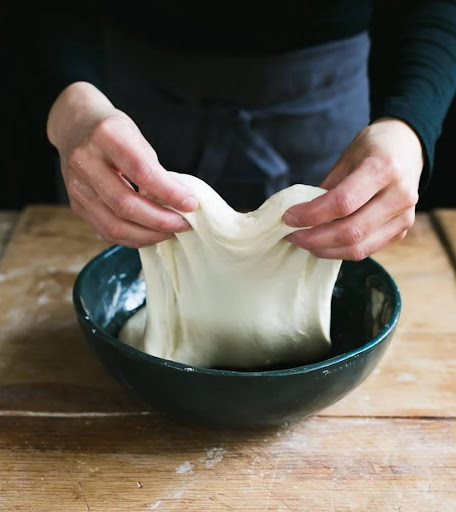Culinary School Bread Lab: How Hydration Changes Everything
Hello Chefs,
Today in culinary school, we dove into the wonderfully sticky world of slack doughs and soft doughs—and let me tell you, it was a deliciously messy day.
These two types of dough are often confused, but they’re distinct in how they behave, how they’re handled, and what they become. Here’s what I learned:
Slack Doughs
A slack dough is a very wet, loose dough—one that spreads out more than it holds its shape. It’s high in hydration (meaning it has a lot of water relative to flour), which gives the final bread a moist, open crumb and a beautiful chew. But that also means it’s challenging to handle. Think dough that wants to puddle on the counter rather than stand up straight.
Slack doughs require gentle techniques—like stretch-and-fold instead of aggressive kneading—to develop gluten without turning into a sticky nightmare. You’ll usually see slack doughs in rustic, artisan-style breads where that light, airy structure is key.

Soft Doughs
Soft doughs, on the other hand, are more structured but still tender and pliable. They’re often enriched with ingredients like eggs, butter, or milk, which make them soft, rich, and perfect for more delicate or indulgent breads. These doughs are smoother, easier to shape, and less likely to stick to everything in sight (thankfully).
What We Made
Brioche Bonanza
We used our soft brioche dough to make three delicious variations:
- Cinnamon rolls — Swirled with buttery cinnamon sugar and baked to golden perfection.
- Morning buns — Like a cross between a cinnamon roll and a croissant, with a sugar crust and a flaky, rich interior.
- Hamburger buns — Pillowy, buttery, and leagues beyond anything store-bought.
Whole Wheat Currant Walnut Batard
Next up: we took a more rustic turn with a whole wheat batard filled with currants and toasted walnuts.
A batard is a shorter, stubbier cousin to the baguette—same basic lean dough structure, but shaped more oval than long. This version had a hearty crust and a slightly sweet, nutty interior thanks to the currants and walnuts. It was chewy, earthy, and so satisfying with butter or cheese.
We used a slack dough base for this one, so it required more careful handling and folding. It really showed how hydration affects both the flavor and feel of bread.
Focaccia—My Favorite of the Day!
And then… focaccia. My personal favorite. This slack dough bread is olive oil’s soulmate: golden, airy, and full of flavor. We pressed it into pans, dimpled it with our fingers, and drizzled it with olive oil, salt, and herbs before baking. It came out with a crisp bottom, a fluffy crumb, and the most addictive flavor.
Focaccia is amazing on its own, but also insanely good as sandwich bread. Slice it in half and fill it with roasted vegetables, fresh mozzarella, prosciutto, or whatever your heart desires. Honestly, it was love at first bite.
Takeaways from the Dough Lab
This unit reminded me how much dough hydration and enrichment affect not only the flavor, but the entire baking process—from how you handle the dough, to how you shape it, to how the final bread feels when you take that first bite.
And while working with slack doughs can feel like taming a very enthusiastic blob, the payoff is always worth it. Every loaf, roll, and bun we pulled from the oven was different, and yet they were all built on just a few simple ingredients handled in different ways.
Here is the recipe for focaccia. Hope you enjoy!
Until next time, stay soft, stay slack, and bake on!
— Brennah
 Brennah Van Wagoner
Brennah Van Wagoner
Weekly Newsletter Contributor since 2025
Email the author! brennah.oaks@gmail.com
